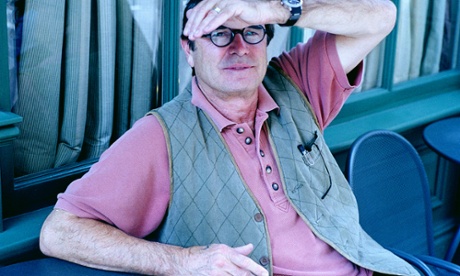
Digging through one my dusty bookshelves recently I got reacquainted with Lady Max, a short London “imaginary memoir” by the American writer Paul Theroux, who lived in the city for 18 years from 1971. The title character is a controlling English aristocrat who lives in the Boltons, where house-hunters can currently find the second most expensive homes in Britain (average price, £26.6m). There are some rich descriptions of a London that already feels half-disappeared:
Going out alone into the winter night took an effort of will, like crossing a frontier, because I was re-entering London after a full day in the fastness of my tall house.
It was such a quiet and gently city at night, with shadows on its face; it was a city that slept, a city with a bed-time. And in this part of the city the skyline was old-fashioned chimney-pots, slates roofs and church spires. On these winter nights I had the illusion of being a part of it, an alien being swallowed by the city’s shadows, and transformed.
I love night-time London’s sulphurous skies. At Chelsea Reach the light shimmering in the river had the watery dreamy quality of one of Whistler’s Nocturnes. I was intensely conscious of where I was, and I thought of another trait that Londoners possessed: they could find their way around in the dark.
All this from the upper deck of the bus, sitting at the front window, with the sense of piloting a very old, low-flying plane.
Theroux’s story explores “literary London”, the bottomless snot-hole that is Lady Max’s social habitat:
After a weekend - Saturday shopping, Sunday outing to Box Hill - I met Lady Max at Blackfriars and he took me across the river to see some rotting Dickensian warehouses at Shad Thames.
“All of these wonderful old buildings will be renovated and made into hideous little flats for awful people one day.”
That week we went to Strawberry Hill, to Hogarth’s house in Chiswick, to World’s End, to the room Van Gogh had rented in Brixton, to the Sir John Soane Museum. In had crossed Lincoln’s Inn Fields thirty time and had never been aware of this lovely house that had been converted into a museum of exotic treasures. Often I would be lookimg at a gable, or some fretwork, or a picture, while she monologued in her offhand way about something totally unconnected, usually sexual.
“I thought I had seen everything,” I would say.
“Yes, Sir John actually collected these artefacts himself.”
“I mean, about what you just said about - what’s the word?’
“Oh, that. Frottage. That’s just French for rubbing. Very subtle. Not very popular. Takes ages. Who has the time, my dear?” And she turned to an inked sheet of petroglyphs. “I much prefer that rubbing.”
At Turpentine Lane in Victoria she pointed out the fact that the houses had no front doors, and in perhaps what seemed to her a logical progression but was surely a non-sequitur, added, “And I never wear knickers.”
She deconstructed for me (the word was just becoming fashionable among reviewers that year) the Albert Memoira, and said, “You should put this thing into a story some time.”
Lady Max is available in Theroux’s My Other Life: A Novel or all on its tod by way of here.

